Supervised by: Liam Charles Obuobie MEng Hons, EngTech MIMechE. Liam is currently a final year Masters student of Mechanical Engineering at Newcastle University. He has secured a position as a Graduate Mechanical Building Services Engineer at Arup for post-graduate employment. His dissertation has garnered internation interest in further work.
Abstract
As the world is transitioning into using cleaner forms of energy, electrically propelled vehicles are rapidly increasing in popularity. Electric scooters have become the face of it all in most urban cities due to their simplicity and cost-effectiveness. However, with some, it is hard to see it as an alternate form of transport, possibly because of discomfort, safety fears, or simply not catering to minority groups. With that, this paper aims to present a newly improved design of E-Scooters and their system by establishing a framework for a user-centered design process. Hierarchical task analysis, as well as knowledge of the general socio-technical system, is then applied to identify areas of improvement within the system, and using this as a reference, user requirements are stated and justified, and a low-fidelity prototype of the electric scooter is constructed. This will ultimately be a step forward not only for E-Scooter users but the general public as well. The usefulness of the study is based on the fact that it provides direction and insight for potential electric scooter-sharing services that want to prioritize highly accessible and ergonomic design.
Introduction
In our increasingly integrated society, quick and efficient transport has become highly sought-after. Amongst the various revelations that have struck this balance of practicality and cost-efficiency, one innovation has had a particularly profound impact – electric scooters. Quite simply, these are scooters that have had an electric motor built into them, eliminating the need for any significant form of physical exertion. Moreover, these scooters often clock in speeds up to 28 kilometers per hour and can be easily maneuvered, making them the perfect addition to any modern environment. Furthermore, in a society where concerns about global warming are prevalent, many see electric scooters as a key asset in reducing the carbon footprint in urban areas.
Despite this, however, electric scooters are far from optimized and are becoming increasingly dangerous as the user base expands. For instance, across Britain, there was a reported total of 1,280 E-Scooter collisions in 2021, which is nearly three times the amount of collisions reported in 2020 (460 collisions) [1]. Moreover, many modern electric scooters fail to consider the needs of certain parties, including physically disabled individuals and, in some cases, even women. This is portrayed in the fact that 79% of women reported not feeling safe using E-Scooters [2], which is substantially higher than the same statistic for men. In a 2020 Polish study, Agnieszka and Tomasz conducted an electric scooter and electric bike-related survey on a random sample of 633 participants within the area that encompasses the cities of Gdansk, Sopot, and Gdynia. They found “no retired or disabled people riding E-Scooters among our respondents” [4]. This finding further displays the disregard when it comes to optimizing micro-mobility to cater to people groups that are often marginalized.
It should be noted that in certain countries, such as Cyprus, the potential of electric scooters isn’t being actively realized due to the presence of strict regulations. An example of such a regulation is the inability of people to ride electric scooters on roads, thus inhibiting society from transitioning to electric scooters as a major form of transport. Although, at first glance, this may seem like something that may be solely beneficial due to safety being enforced, the absence of proper electric scooter infrastructure to make up for the stricter regulations limits users to obstacle-filled pavements and narrow bicycle lanes, therefore limiting usage and negating the carbon neutral benefit [3]. Despite safety being maintained, it comes at the cost of other aspects of human factors, such as usability, satisfaction, and accessibility, when these costs do not have to exist in the first place, given appropriate changes.
What can be commonly noticed in most E-Scooter sharing services is that a smartphone is essentially a necessity if one wishes to use the service. Prominent names in the electric scooter-sharing industry, such as Lime, Bird, Goat, Skip, and Neuron, all require the user to use a smartphone to download their app and, with the app, scan a QR code on the electric scooter to unlock it [5, 6]. While this allows for a dockless scheme for the sharing service and provides convenience for adept smartphone users, it restricts usage to be available only to say demographic. Moreover, it acts as a barrier to entry for groups, such as the elderly, who may be less confident with smartphone usage or, rather, those who do not possess a smartphone in the first place.
The aforementioned points seem to comply with the findings displayed in “Shared Micro-Mobility Policy Toolkit: Docked and Dock Less Bike and Scooter Sharing” [13] that state that the primary user base of electric scooter and bike sharing services seems to be well-educated young adults, between the ages of 21-45, that are childless and live in built-up areas. It can be deduced that older generations/retired citizens make up a small minority of the user population, with parents joining them as part of the minority. This, however, is to be expected as, in many countries, it is forbidden for two people to be riding the same electric scooter simultaneously, leaving parents unable to commute with their children.
Thus, it becomes clear that there is a need for an electric scooter that addresses the accessibility gap while improving general ergonomics. Essentially, the question becomes, ‘What human-centered optimizations can be implemented to make electric scooters as ergonomic and accessible as possible?’
Aims and objectives
Aims:
- Optimize public electric scooters based on the pre-existing attributes already in place and, in doing so, fulfill criteria necessary for maximally user-centered design.
Objectives:
- Identify the pre-existing attributes and functions of electric scooters through an HTA schematic.
- Suggest areas of optimization – including safety, accessibility, and ergonomic aspects – and potential solutions to make said improvements.
- Add any completely new optimization features that may not be in public electric scooters as is.
Method
In the pursuit to make electric scooters as accessible as possible, a key concept that was held to great importance was to envision ourselves as already existing or potential users of an electric scooter. Questions such as “was the electric scooter usable?”, “was it catered towards me even if I’m an unconventional user?”, “Did the product satisfy me?” etc., formed the framework of this concept. After all, in the ergonomic approach to design, a fundamental aspect is to ensure user well-being and satisfaction and to optimize human-element interaction within the socio-technical system. By placing yourself in such a perspective and obtaining information, such goals can be met. In this regard, the steps that form the method we have decided to carry out to satisfy our objectives and meet the defined aims are as follows:
First, to obtain the foundations of our method, we have decided to follow the user-centered design process standard, as defined by ISO 9241-210 [17].
Figure 1 displays the specific steps in a user-centered design process, as defined by the ISO. These steps will be closely followed in this report to achieve success in the last step by ultimately optimizing the electric scooter to maximize its accessibility, safety, and ergonomics.
Secondly, to understand and formulate the general context of use for electric scooters, we first had to understand the actual task of riding the electric scooter and extract the respective factors that accompany it, i.e., properties of the actual scooter, the environment it is used in, the actions taken to complete the task, etc. To do this, we employed hierarchical task analysis to fully understand every component of the process. In HTA, “the task is decomposed into a set of sub-goals for each of which there is a set of information requirements, which the author calls ‘sub-goal templates’ (SGTs).” [19]. The steps involved in an HTA are: “1. Define the use case(s) under analysis. 2. Collect data about the use case, such as tasks involved, interactions, and constraints, through observation, subject matter expert input, and walkthroughs. 3. Constructed the HTA with the starting point of the flowchart as the use case.” [18]. In our case, we decided to use the task of riding an electric scooter from the Neuron electric scooter-sharing service as the use case and collect data from the service website [6]. Though the HTA was made in reference to Neuron, it is still widely applicable to most other electric scooter sharing services as they all follow a similar format in terms of the steps to use them.
After the hierarchical task analysis flowchart was completed, two sets, advantages and disadvantages, were formulated based on the HTA flowchart, information gathered on the general socio-technical system, that is, the usage of electric scooters, and product aspects of Neuron electric scooters [6]. One set contains factors that were deemed satisfactory, i.e., something we would consider including within our design, and the other set contains factors that were deemed as unsatisfactory and requiring improvement/overhauling or new solutions in order for a highly user-centered design to be realized.
By analyzing both sets and the socio-technical system, user requirements and their justifications were specified, some of which already typically exist within the design of electric scooters and others that served as previously absent solutions to the unsatisfactory factors that were previously specified.
After all user requirements and electric scooter & related infrastructure features were laid out and justified, research and collation of anthropometric data were conducted in order to deduce the dimensions of our electric scooter frame design. The main goal was to ensure that by considering anthropometric data that spanned different percentiles and correlated to different regions of the world, dimensions that cater to as large a portion of the population as possible would be determined.
The final step in the process involved using both the user requirements and electric scooter dimensions specified to produce a low-fidelity prototype, expressed in drawings of the electric scooter’s base form and concept art of the add-on features accompanying the electric scooter.
Results and Discussion
In carrying out the method specified in section 3, the results obtained are as follows:
HTA flowchart:
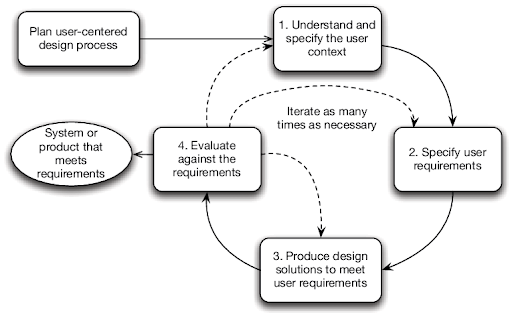
Figure 1[16].
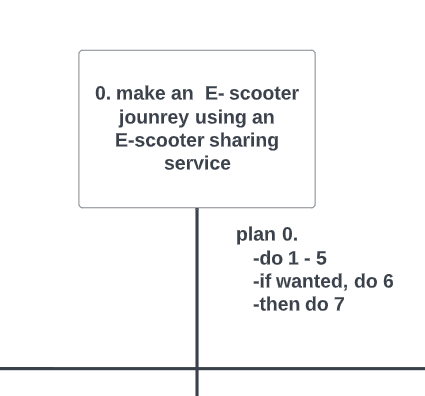
Figure 2: Plan 0.
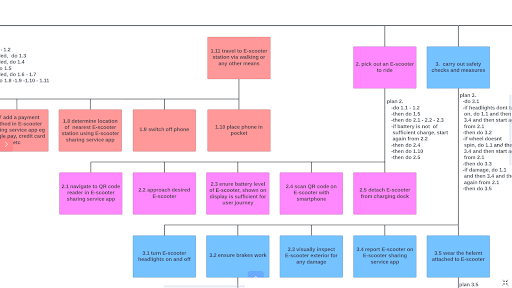
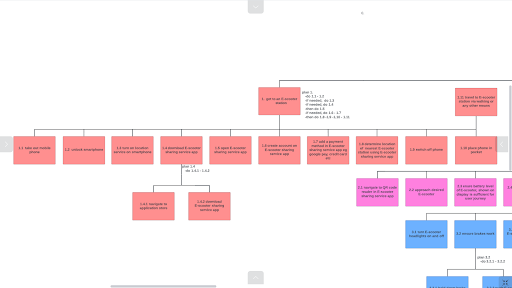
Figure 3: Plan 1 (red).
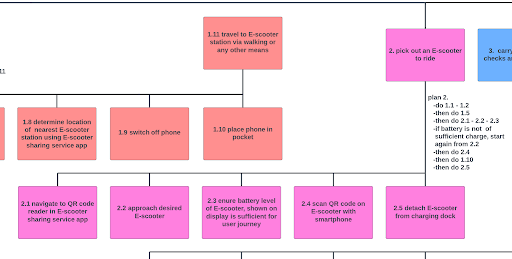
Figure 4: Plan 2 (purple).
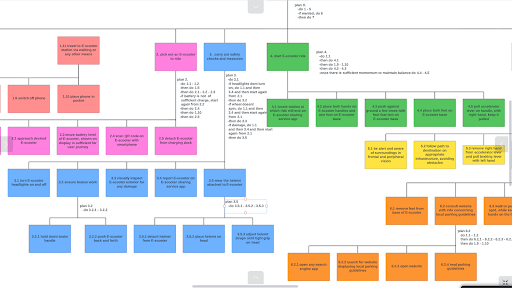
Figure 5: Plan 3 ( blue) and 4 (green).
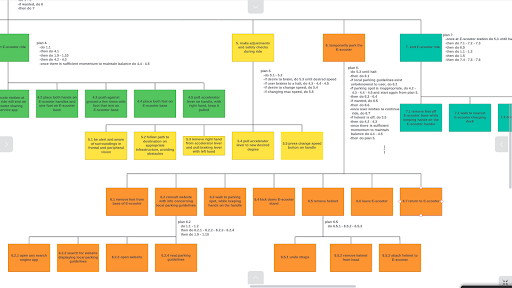
Figure 6: Plan 5 (yellow) and 6 (orange).
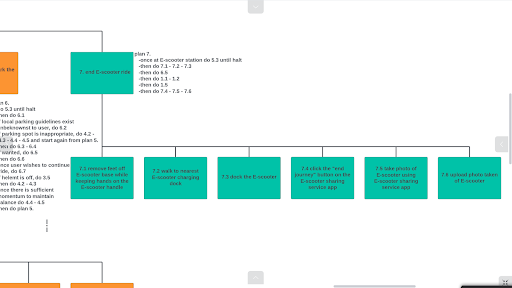
Figure 7: Plan 7 (turquoise).
Sets – satisfactory and unsatisfactory aspects:
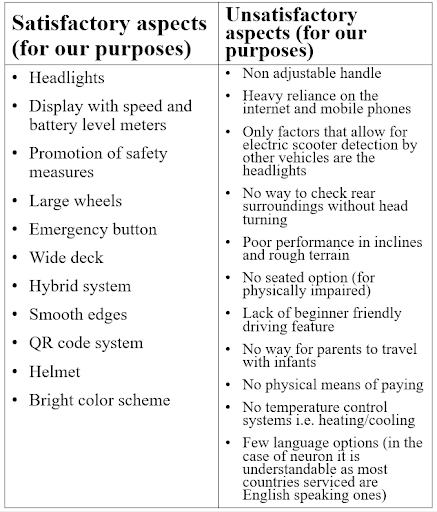
Figure 8: Sets produced based on the context of the use.
Figure 3 depicts the satisfactory and unsatisfactory components of pre-existing electric scooters for public use. This report plans to optimize the satisfactory aspects to further maximize aspects, including safety and ergonomics, while also improving the unsatisfactory aspects to minimize issues concerning performance, comfort, accessibility, and more.
User Requirements:
Before implementing any design changes, it is important to know the specific requirements for the new to be considered successful. For each of the requirements, the specific description of the requirement will be laid out, and the reasoning for the implementation will be justified.
General Requirements:
- Larger Wheels (300 mm diameter):
Electric scooters are typically fitted with wheels that are on the smaller side, especially compared to other means of transport, such as bicycles, motorbikes, cars, etc. This, coupled with the light weight of the material of which electric scooters are composed, leaves them especially vulnerable to minor road obstacles, e.g., pebbles and bumps, since the vehicle has relatively minimal inertia. What has been stated previously means that electric scooters are typically one of the least viable modes of transportation when the terrain deteriorates as they are bound by a serious restriction to very smooth and well-maintained roads. One wheel-related fix would be to consider tire suspension, and another to increase the wheel size. Seeing as suspension rebound would inevitably cause problems and dismount risks when encountering an incline, we have opted for the latter.
- Highly luminous headlights and rear lights:
The inclusion of highly visible headlights is to ensure that they improve the luminous sector that a typical electric scooter headlight covers. Amongst the many benefits associated with this, one especially noteworthy one would be the increased reaction time and stopping distance in the case that an obstacle emerges in the luminous sector. This would most definitely aid in reducing the number of collisions with given objects. Even if a collision did occur, the impact would be significantly reduced due to the total reduced speed. The most efficient way to implement this change would be to implement bright, white LED lights. This is because this specific form of light is much more efficient (in fact, accounting for only 10% of the total energy compared to that of an incandescent light bulb) and has increased longevity (they live 25 times longer than traditional incandescent light bulbs) [21]). Furthermore, the implementation of the color white (compared to any other color) is also imperative as it is the brightest form of light (as a result of almost all of the wavelengths being reflected). Overall, the implementation of luminous headlights would, at the very least, incline users to ride scooters as a result of the increased visibility at night and the increased sense of comfort associated with that.
- Reflective tape and bright blinking lights:
The implementation of a reflective tape (or a reflective material generally) would allow for much greater visibility of the scooter, which would, in turn, aid in reducing the number of unseen collisions. This is because these materials reflect the light from cars and other sources of lumination, which means that the scooter and the user riding it are especially bright during night-time or dark periods. The implementation of bright blinking lights would serve a similar function to the reflective tape in that it would be another means for oncoming vehicles to see the electric scooter better. The color of the blinking lights should also be considered because a white light (for example) may be indistinguishable from the general traffic in highly congested areas. As such, a color (such as red) would be of much greater effectivity, as it stands out and is commonly associated with ‘stopping’ or ‘caution’. Overall, the implementation of these features would primarily serve to increase the safety of the electric scooter rider and those around them.
- Handle with adjustable height and angle:
Another requirement that could be implemented is a handle equipped with an adjustable height and angle. Specificities of this implementation will be more accurately analyzed in the anthropometric section following this. However, the rationale for implementation is to ultimately make the electric scooter as tailored to the sizes of any individual as possible. This implementation will also have an effect on improving the ergonomics of the scooter because users will be able to scale the handle however they find most comfortable – in turn, the static load for the user will be minimized, as a neutral posture will be assumed. The utility of this is that any potential cantilever effects on the body will be minimized, which could have knock-on effects such as minimising any conditions, such as ‘Work Related Upper Limb Disorder’ (WRULD). Discomfort, for instance, due to a person of taller stature having to lean down to maneuver the scooter, can lead to static loads on the back and, ultimately, back pain. These health risks are alleviated with the luxury of adjustability, therefore ensuring the safety of users both in the present as well as in the future. Additionally, the safety of the scooter can also be assumed to improve because a more comfortable experience would mean easier and more fluid mobility (which could be vital in dangerous road conditions). Furthermore, having a changeable angle for the handle means that the throttle of the scooter can be positioned more comfortably, as well as the visibility of the display to the user would be much more dynamic. Overall, this implementation greatly aids in enhancing the user experience when it comes to personalization.
- Optimal PowerTrain innovation:
The motor is a key component in a system called PowerTrain. The three major components are motors, ESCs, and batteries. The main focus for this optimization is going to be the motor type and the ESC, as they go hand in hand when powering the Electric scooter. As for the battery, it is merely a provider of power, so the choice of Lithium-ion batteries over Lead acid batteries was indisputable, as the pros outweigh the cons, best described in UNAGI’s article guide [22].
Arguably the most important component when redesigning an E-Scooter in hopes of improving the performance of the motor. The motor is responsible for determining the speed, acceleration, hill climb ability, and power consumption. When choosing a motor initially, there are two primary options one can branch off brushless DC motors or brushed DC motors. Both have their advantages and disadvantages, but the type that was selected was brushless DC motors due to the basic fact that it better suits public use. Brushless DC motors, unlike brushed DC motors, have a very long lifespan of 10,000 hours which is comparatively more worthwhile than the mere 1,000-3000-hour lifespan of Brushed DC motors. Complimentary to the previous fact, brushless DC motors (BLDC) require very low maintenance over large periods. One minor drawback of choosing a BLDC is the cost. According to World Electric Vehicle Journal Vol. 5 (in Figure 3), for a power output of 1000W, the cost of a BDC motor is £85, while the cost of a BLDC motor is £142 [14]. Although it might seem like an upset, a £60 difference is worth it when taking into account the number of advantages. Finally, with a mileage range of over 35-40 miles on a single charge, these will fulfill the needs of the majority of public users, whether they’re commuting to the train station a mile away or even visiting family 30 miles across town. From here, it was clear that the BLDC motor type was the better option, but to achieve the main objective, which is to target a wider audience, it was decided that narrowing the BLDC motor type option to one specific option, known as the permanent magnet brushless DC motors (PMBLDC) motor was a step forward. What makes the PMBLDC motor stand out other than its efficiency rated at 89% is its design implementation discussed in a study done by Alper Kerem in 2021, where he mentioned that, in the design of the PMBLDC motor, a structure of interior rotor permanent magnet type would be used “so that it can be applied to a drive that requires a large torque and capable of acceleration and deceleration with good response” [15]. In essence, this enables the motor to be placed in the wheel of the E-Scooter, reducing its weight and improving its performance.
With each motor, a complementary ESC (electric speed controller) is needed to help it function. It is mainly required for speed regulation, and it importantly relays the signals received from the other electronic components and translates them to perform a course of action, e.g., the throttle is twisted, the controller relays the information for the battery to send more power to the motor to increase the speed. ESC is judged based on many parameters, but one that plays an important role in the design is its phase voltage waveforms. Two-phase voltage waveforms are known as the sine-wave controller and the square-wave controller. For our design, the sine-wave controller is the favorable option as it aligns with our main objective of catering to a wider audience while simultaneously providing a safer and smoother ride. The sine wave controller’s main advantages over the square wave controller (on a surface level) are that it produces little to no noise, doesn’t overheat over long drives, and produces smoother acceleration. This alone ensures the riders are always satisfied with the ride.
- Dual motors on the rear and front scooter to improve braking system, acceleration, and speed:
It has been an ongoing issue with E-Scooters and their supposed failing braking system – for instance, forward wheel drive (FWD) may cause the scooter and, therefore, the rider to topple forwards when braking suddenly. Thus, dual motors will be installed, also known as the two-wheel drive (2WD), which will improve weight distribution and user safety [23]. Additionally, the added power will ensure users experience smoother rides on bumpy and uneven grounds. However, it must also be noted that there are 2 primary cons exist: increased costs and increased weight. Regarding the former, an investment into 2WD must be made to market the electric scooters as a competitive product in the quickly-saturating global market. In terms of the latter, increased weight is preferred as it improves aspects such as traction and smoothness of the ride; since these scooters are for public use, there won’t be many users carrying them physically, which allows the extra weight to be disregarded.
- An emergency button on the electric scooter:
As concerns about safety within urban areas, especially from women [2], continue to be ever so prevalent, we have decided to address such concerns by including an emergency button. This button, when pressed three times in quick succession (to avoid accidental activation), will alert local authorities to the scooter’s location. The feature can prove to be lifesaving if one happens to crash while using the electric scooter or if the user feels unsafe while driving, perhaps due to being followed or targeted for robbery.
- E-Scooter display:
The inclusion of a display in the center of the handlebar, which contains a GPS, speedometer, and battery level indicator, accompanied by language selection and universally understood symbols, will allow for navigation without having to stop the ride from accessing smartphone-based navigation software. It can aid in choosing the right electric scooter in terms of battery and act as an informational means to avoid speeding. The decision to provide multiple languages to select from (languages available will vary from region to region) will ensure improved accessibility to tourists and citizens of countries with multiple languages and cultures (such as India), allowing for the further expansion of the user base.
- Rearview windows:
When navigating the streets or pavement, it is imperative to be as aware of the surroundings as possible. As one scout for potential obstacles, their awareness of certain parts of their view must not be compromised. This can happen in performing actions such as turning the head 180 degrees for a rear view. To decrease the safety risk, we have included a rearview window so one can perceive multiple areas of their view without compromise.
- Bell:
An appropriate complement to the visibility and awareness-related features stated throughout this section would be the implementation of an alert bell situated in a place such that it is within a finger’s reach. This addition would further decrease the risk of collision-based accidents caused by a lack of awareness, as the ring of the bell can effectively bring attention to the quiet vehicle, just as it does on bicycles.
- Rounded design:
Although collisions with the edge of the scooter aren’t nearly as big of a problem in electric scooters as in non-electrical ones, it is still necessary to alleviate the extent of the edge collisions of any product. A rounded design increases the surface area of the contact between the electric scooter and other bodies during impact, allowing for less pressure to be exerted and, thus, less damage to be sustained.
- Heating element:
A heating element present within the handles and possibly other areas of the electric scooter can be a great asset if the electric scooter is in service year-round during seasons in which the temperature is low. It can act as a provider of comfort during frigid conditions and even allow for the user to not have to wear gloves, ensuring that grip isn’t minimized (this can happen as winter gloves typically have a low surface-to-surface friction coefficient, especially wool ones). Generally, the addition contributes positively to user experience and safety.
- Tires:
Regarding the tires of the vehicle, the environment must be taken into consideration to best equip the user. For example, on a wet road, wider tires perform better due to the higher surface area and more sipes. Whereas on an icy road, the same tires would perform significantly poorer. In this case, tires with less surface area and specialized tread patterns will be ideal for ice and snow. Keeping in mind that the weather is constantly changing, it will be necessary to hire and train workers to actively seek out and swap tires when required.
Requirements for people with health conditions or impairments:
Another key aspect that should be considered when designing electric scooters for the general public is making them accessible to people with health conditions or impairments. This is because this population comprises a sizable portion of the total demographic, and many (especially smaller) implementations could be administered cost-efficiently to open a whole new market.
- Bicycle-style seat add-on with an adjustable height, accompanied by a wide deck:
One of the user requirements when considering specifically people with locomotive hindrances should be implementing an adjustable seat. This simple addition to the electric scooter will not only allow those with certain locomotive impairments to have access to electric scooters, but it will also improve the general ergonomics of the electric scooter because it could also serve as a method of resting while riding the scooter. Furthermore, a wide deck would also prove to be a very practical addition, as it would allow for an even wider stance to be taken, likely contributing to a more comfortable experience. In addition, this couples as an added safety measure to minimize any fall from the scooter because a wider stance means an increased balance. Overall, these implementations would prove to be very valuable additions because they increase the market reach to a wider audience (those being people specifically with certain milder locomotive disabilities/senior individuals) while also implicitly adding extra safety features.
- Bright and contrasting color schemes with a luminous OLED screen:
When considering anyone with any form of visual impairment, it becomes clear that implementing a bright and contrasting color scheme is quintessential. This especially becomes the case when considering those with any form of color blindness, as it is usually the dull colors that are the hardest to differentiate. Additionally, it should be considered that avoiding certain color pairs (such as red and green, blue and yellow, etc.) should be paramount so as to not inhibit the ability of those with color blindness to make distinctions. Furthermore, it could potentially be considered even coloring the most important parts of the scooter (such as the handles, throttle, etc.) in their color so that the contrast indicates to individuals with a poor near vision where those parts are. In terms of the implementation of the OLED screen, it becomes clear that this would be a major upgrade over the current LCDs. One reason this is so is that OLED screens have a contrast ratio much higher than those of LCD screens, meaning the information displayed (such as battery level, speed, etc.) can be viewed more easily. Furthermore, the higher screen brightness associated with OLED screens means that they can be seen more easily at night, which would meet the requirements of those with night blindness. Finally, OLED screens have much more efficient and lower power consumption, which can be viewed as a general optimization and allow for a lower percentage of wasted energy. Overall, these implementations may be seen as redundant to the vast majority of individuals, but they address the need for various optic-related conditions.
- Latching Mechanism and infant carriage add-on:
As unrealistic as this may sound, the implementation of this mechanism is not too difficult to materialize – a simple latching mechanism from the back of the scooter to the front of the carriage will allow those with children to have the option to also ride electric scooters. In terms of the power requirements to move a carriage, many electric scooter batteries do supply enough discharge to move 120 kg individuals at seamless accelerations – as such, it can be deduced that adding a 19 kg (97th percentile male 3-year-old weight) [20] + carriage weight (estimated to be 5 kg) addition would not significantly detract from the scooter’s operability. The carriage could also double up as a suitable space for storing cargo if one doesn’t have a child, making the electric scooter ideal for a quick and lightweight shopping trip. However, it should be noted that this addition would be at the expense of some maneuverability, as the side-to-side swinging motion is significantly inhibited, as well as the previous sharpness of turns. However, this implementation would allow for a much larger demographic to be accessed and accounted for.
- Side wheels’ add-on:
The main purpose of this addition is to act as an accompaniment to the electric scooter journey embarked on by people who may be novices in the activity or those who find it challenging to maintain their balance, despite the wide deck. By providing side wheels (inspired by bicycle training wheels), the responsibility of maintaining balance becomes mostly obsolete, widening the accessibility range to those who may have otherwise refrained from use due to inexperience, fear, or conditions such as vertigo.
E-Scooter station requirements:
Though not the main focus of this study, these stations and their design must be considered as they are vital when introducing the optimized E-Scooter since they must be able to efficiently facilitate the use of the advanced vehicle. Keeping this in mind, the features of these optimized E-Scooter stations include the following:
- Solar panels: In the process to maximizing the use of renewable energy, the addition of solar panels to these stations will be hugely beneficial. However, due to varying weather patterns in most regions worldwide and the absence of sunlight at night, the solar panels will be accompanied by incoming electricity from power plants (whether these are nuclear, coal-powered, or something else will depend on the particular country’s primary source).
- Convenient docking system: To maximize user convenience, instead of docking systems that require the manual insertion of chargers into the E-Scooters, our stations will house wireless charging platforms. These platforms remove the need to manually charge the E-Scooters, as they operate similarly to wireless chargers since charging will immediately begin as soon as the E-Scooter is brought onto the platform.
- Accessible add-ons: In our journey to creating an ideal E-Scooter that caters to a much larger proportion of society than previous iterations of E-Scooters have, the E-Scooter stations will include add-ons that are easy to attach. For example, there will be a multi-purpose carriage that can be attached to the rear-end of the E-Scooter, which can be used in numerous ways, from serving as a storage option to even allowing children to sit in them while their parents/guardians ride the E-Scooter (this idea was heavily inspired by an already existing product, EcoReco Cargo) [8].
- Cash or credit card payment option: In a society in which reliability on the internet and smartphones is at an all-time high, many of those that do not possess such devices or use the technology find themselves experiencing increasingly potent levels of digital exclusion. A 2018 statistic states that 10% of adults in the UK were classified as “non-internet users”, meaning that they have never used the internet ever, or have not used it in over 3 months [12]. While this percentage is steadily decreasing all across the globe and is most certainly lower in the year 2022, this doesn’t mean that those left disconnected should be denied access to electric scooter transport. Thus, an option to pay using cash or a credit card at the electric scooter station would solve this accessibility issue. The drawback, however, is that those that opt for cash payment will have to end their trip at a station, though this disadvantage can be lessened by having a high station density.
- Hybrid system: in the shared micro-mobility policy toolkit, a hybrid bike sharing system is defined as “A system where users can check out a bicycle from a station and end their trip either returning it to a station or a non-station location or users can pick up any dock less bicycle and either return it to a station or any non-station location.” [13]. Such a system can be applied to electric scooter sharing, for the reason of it allows convenience for both smartphones/internet users (as they can find electric scooters all across the city, not just in stations, using an app) and non-users (as they can reliably and consistently locate electric scooters by visiting a station, and pay by physical means there).
Anthropometry measurements (1D in sagittal, coronal, and transverse planes):
After all requirements/electric scooter features had been finalized, the dimensions were determined as follows. Note that the values are of 40-year-old subjects, with the male values being of white and black Americans and the female values being of Japanese. Seeing as the two groups are on opposite sides of the scale when it comes to global height, the dimensions specified should theoretically apply to an international audience.
- Seat add-on length and width:
The add-on seat will be a bicycle-style seat with a width of that of the maximum sit bone width, i.e., female sit bone width maximum, + 20 mm, so 155 mm +20 mm = 175 mm width [9, ] [10].
The length will be within the typical bike saddle range (240-300 mm) [11]. We have decided to go with a seat length of 260 mm, as a length beyond that was unnecessary, seeing as the legs aren’t resting on the seat, and it is the width that is of the highest concern.
- Length between the center of the seat base and the folding base:
Assuming the center of the seat base is located halfway through the seat length, it should be 130 mm from the back/front of the seat. Seeing as the back of the seat will be tangent to the vertical line projecting from the back end of the electric scooter base, and the folding base begins at the frontal end of the electric scooter base, the length will be the base length-half of the seat length, i.e., 951 mm-130 mm = 821 mm.
- Electric scooter base length:
Base length will be composed of the 95th percentile male buttock to knee length + 1x 95th percentile male foot length = 658 mm + 293 mm = 951 mm. This should facilitate a large portion of the rider population that decide to choose the seat add-on to accompany the electric scooter ride and hence the portion that does not opt for the seat [7].
- Electric scooter base width:
The electric scooter base width should be large enough to facilitate at least 2x the 95th percentile male foot width (measured from the outer edge of the large toe to the outer edge of the little toe) plus an extra clearance room of 100 mm, so 2×107 mm + 100 mm = 314 mm [7].
- Electric scooter handles vertical height adjustability range (measured from the scooter base surface, when the handle remains at an angle of 80 degrees from the horizontal):
When the user is seated, the electric scooter handle should be slightly below shoulder level. By combining the popliteal height and elbow-to-wrist height, a height slightly below seated shoulder height should be obtained. The 5th percentile female popliteal and elbow to wrist height will be summed to give the bottom of the adjustability range (note that this does not produce a 5th percentile height but rather an approximation, as nth percentile persons are not made up of nth percentile parts). The 95th percentile male waist height will serve as the top of the adjustability range. So the vertical height adjustability range is 543 mm (619 mm to 1162 mm) [7]. By calculating 619/sin80 and 1162/sin80, we are given the handle length adjustability range, which is 551 mm (629 mm to 1180 mm) (rounded to the nearest whole number).
- Electric scooter seat vertical height adjustability range (measured from the scooter base surface to the top surface of the seat):
The adjustability range is the range of height between the 5th percentile female popliteal height and the 95th percentile male popliteal height, i.e., 134 mm (347 mm to 481 mm) [7].
Design:
Figures 4, 5, 6, and 7 are low-fidelity prototypes of the optimized electric scooter model from the sagittal and frontal planes.
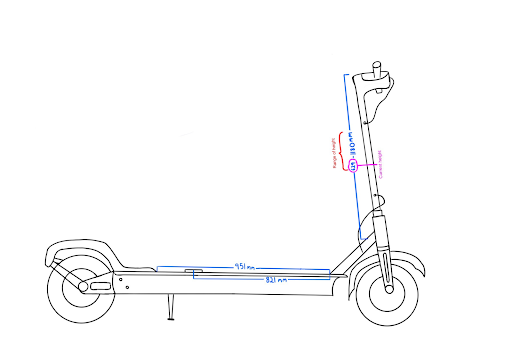
Figure 9: Electric scooter design as seen from the sagittal plane.
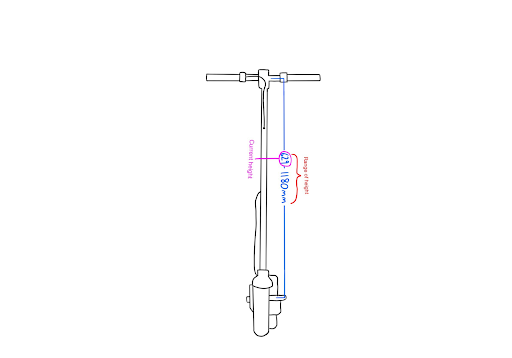
Figure 10: Electric scooter design as seen from the frontal plane.
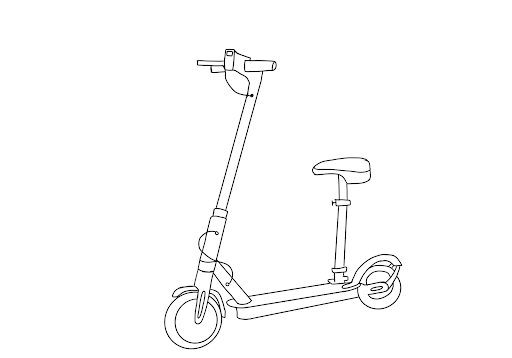
Figure 11: Electric scooter with seat add-on attached.

Figure 12: View of the seat add-on from the sagittal plane.
Conclusion
This investigation involved the use of several engineering methods, including the Hierarchical Task Analysis (HTA) and a human-centered design process (ISO 9241-210), in order to design an optimized electric scooter capable of catering to a greater proportion of society.
Initially, the current base model of the Neuron electric scooter was analyzed to determine 4 aspects of requirements: general requirements, special requirements (targeted towards challenged or impaired members of society), scooter station requirements, as well as specific anthropometric requirements.
Multiple general requirements were identified, for instance, larger wheels to ensure a smoother ride and an advanced powertrain to optimize speed, acceleration, power consumption, and more. These requirements will assist in improving not only the performance of the electric scooter but also user safety, which is a factor that we have focused on to gain a competitive edge and promote this electric scooter to the general public. The same can be said about the special requirements, which aim to prevent social exclusion and expand the user base, both major factors considered in this study. After systematic determination of the electric scooter dimensions, evaluated based on how well they facilitate the general public, all the elements which make up the understanding of the context of use and the direction to be taken to ensure a human-centered design were summarised in a design, serving as a low fidelity prototype.
In the end, an electric scooter design that facilitates a greater proportion of the general population relative to previous iterations was constructed, with the inclusion of each of its components thoroughly justified. The study serves as a foundation for researchers to base further research and experimentation (that includes physical prototypes being produced) on to finalize the optimal design and identify any changes to the blueprint laid out in this study. More specifically, it will act as a tool of aid mainly to those that highly prioritize accessibility and safety in their design. One thing to note, however, is that in the case such research is to be undertaken, budget, costs, and profit must be more heavily analyzed as this was not something covered in detail within this study.
Works Cited
[1] Scooter Accidents and injuries in London, 2021, available from: https://www.express.co.uk/life-style/cars/1619203/E-Scooter-accidents-injuries-deaths-data-2021-london-spt [cited: 15/08/22].
[2] Study on women’s opinions on E-Scooters, 19/04/22, available from:
https://cities-today.com/study-reveals-eight-in-ten-women-feel-unsafe-using-E-Scooters/
[3] https://cyprus-mail.com/2022/04/19/our-view-unfair-to-penalise-E-Scooter-users-before-infrastructure-is-in-place/ [cited: 15/08/22].
[4] Tomasz Bieliński, Agnieszka Ważna. Electric Scooter Sharing and Bike Sharing User Behaviour and Characteristics. Sustainability. 2020; 12 (22):9640.
[5] Electric Scooter Rental Sharing Companies information, 2022, available from: https://whitelabelfox.com/top-electric-scooter-rental-sharing-in-2022/ [cited: 15/08/22].
[6] Neuron Mobility website available from: https://www.rideneuron.com/ [cited: 15/08/22].
[7] Anthropometrics of the human body, 08/27/2020, available from: ANTHROPOMETRY AND BIOMECHANICS (nasa.gov) [cited: 15/08/22].
[8] E-Scooter cart add-on, 2022, available from: https://ecorecoscooter.com/products/ecoreco-cargo [cited: 15/08/22].
[9] Sit Bones Measurements, 2022, available from: Which Saddle is Right for Me? | Rivet Cycle Works [cited: 15/08/22].
[10] How to measure your sit bones, 15/09/2018, available from: How-To Measure Your Sit Bones Width for Bike Saddle at Home | RoadBikeBros [cited: 15/08/22].
[11] Bike Saddle Fit Guide: 6 Images will Make the Differences, June 04/07/2021, available from: Bike Saddle Fit Guide: 6 Images will Make the Differences (apexbikes.com) [cited: 15/08/22].
[12] Exploring the UK’s digital divide, 04/03/2019, available from: Exploring the UK’s digital divide – Office for National Statistics (ons.gov.uk) [cited: 15/08/22].
[13] Shaheen, Susan, and Adam Cohen. “Shared micro-moblity policy toolkit: Docked and dockless bike and scooter sharing” (2019).
[14] Integration of a Folding Electric Two-wheeler Vehicle for the Future, 20/08/2022, available from: https://www.researchgate.net/publication/288104003_Integration_of_a_Folding_Electric_Two-wheeler_Vehicle_for_a_Future_Commuting_Transportation#pf4 [cited: 15/08/22].
[15] @article{Kerem2021DesignIA,”Design, implementation and speed estimation of three-phase 2 kW out-runner permanent magnet BLDC motor for ultralight electric vehicles” by Alper Kerem{2021}, pages={1-13} }.
[16] A Case Study for Universal Design in the Internet of Things, available from: https://www.researchgate.net/publication/263429371_A_Case_Study_for_Universal_Design_in_the_Internet_of_Things
[17] ISO 9241-210:2019 – Ergonomics of human-system interaction, 2019, available from: ISO – ISO 9241-210:2019 – Ergonomics of human-system interaction — Part 210: Human-centred design for interactive systems
[18] HTA overview, 2022, available from: Hierarchical Task Analysis – an overview | ScienceDirect Topics [cited: 15/08/22].
[19] Lees’ Loss Prevention in the Process Industries, 2022, available from: Lees’ Loss Prevention in the Process Industries (Third Edition)https://doi.org/10.1016/B978-075067555-0.50102-X [cited: 15/08/22].
[20] Form 2125, Implementation Plan, 2020, available from: CDC Boys Growth Chart: Birth to 36 Months, Length-For-Age and Weight-For-Age Percentiles (3rd – 97th Percentile) Download Printable PDF | Templateroller [cited: 15/08/22].
[21] Lighting Choices to Save You Money, 2019, available from: https://www.energy.gov/energysaver/lighting-choices-save-you-money [cited: 15/08/22].
[22] Electric Scooter Voltages- A Performance Guide, 05/07/2022, available from: https://unagiscooters.com/uk/scooter-articles/electric-scooter-voltages-performance-guide/ [cited: 15/08/22].
[23] The advantages of dual motor scooters, 2021, available from: The advantages of dual motor scooters (scotsman.me) [cited: 15/08/22].
[24] Burley Design Bike Trailer Yellow, 2022, available from: https://www.amazon.com/Burley-Design-Bike-Trailer-Yellow/dp/B010LLGWKE?crid=5TSI1OYSWNKS&keywords=burley%2Bbee&qid=1645549984&sprefix=burley%2Bbee%2Caps%2C82&sr=8-1-spons&smid=A37STSWX3HMAIT&spLa=ZW5jcnlwdGVkUXVhbGlmaWVyPUExQURBOTNHNDNOOEpBJmVuY3J5cHRlZElkPUEwODc5NTc0MU5HUE5FU05WQTFGNiZlbmNyeXB0ZWRBZElkPUEwOTQ1MzU2MzVXTzJGNVZFRzhYUiZ3aWRnZXROYW1lPXNwX2F0ZiZhY3Rpb249Y2xpY2tSZWRpcmVjdCZkb05vdExvZ0NsaWNrPXRydWU%3D&linkCode=sl1&tag=primeunboxi0c-20&linkId=0279f0b60b9d6c62d57b8d29c481f8bb&language=en_US&ref_=as_li_ss_tl&th=1&psc=1 [cited: 15/08/22].
Appendix
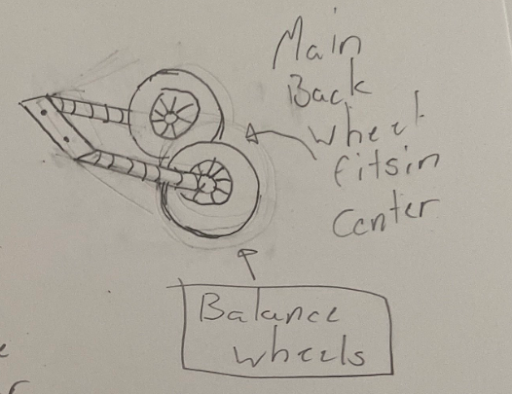
Appendix A: concept art for the side wheels add-on.

Appendix B: inspiration for carriage add-on [24].




